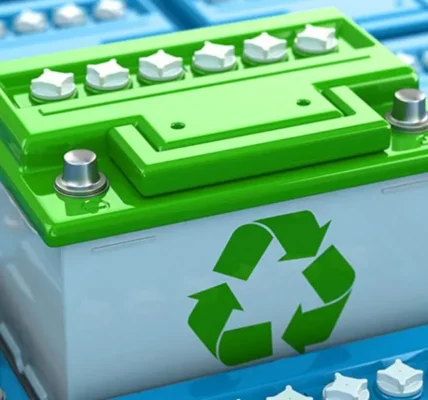The decline in wholesale dispatches is primarily due to the ongoing economic slowdown and lower production of BS-IV vehicles, claims SIAM. With a weak outlook, there could be more disruptions and plant closures in the coming week amid growing concerns on the fast-spreading coronavirus across the world.
Staring at production cuts and possible plant disruptions by coronavirus which has already disrupted global supply chain the automobile industry was in deep red in the month of February with preventive production cut by the automakers for transition BS-VI aggravating the performance.
Passenger vehicle domestic sales in India in February 2020 has declined 7.61 percent to 251,516 units, compared to 272,243 units recorded in the same month last year, revealed SIAM on Friday. Passenger car domestic sales have dived to 156,285 units last month, down 8.77 percent from 171,307 units registered in the same month of 2019.
Industry veterans and analysts say that the wholesale dispatches have been on the decline and the impact could aggravate.
“Wholesale dispatches decline by 7.6% as compared to the sub 2% decline in retail volume during Feb 2020, indicating a continued focus on inventory liquidation by OEMs/dealerships. BS-IV inventory has come down below a two-week level, and there could be a sharp increase in discounts for certain slow-moving models in March to liquidate BS-IV inventory. Given lean inventory level at dealerships, some inventory restocking impact will be visible in wholesale dispatches for March and Q1 FY’2021,” said Ashish Modani, Vice-President, ICRA, a rating agency.
However, utility vehicle sales have seen a slight hike in terms of domestic sales with 83,351 units recorded, as against 83,269 units sold in February 2019. Cumulatively, passenger vehicle sales were 2,632,665 units during the April-February FY20 period, compared to 3,085,528 units in the April-February FY19 period, down by 14.68 percent.
“These are difficult times for all of us. The human race is put to test with the spread of coronavirus. Markets around the globe are impacted by the outbreak. The auto sector here and elsewhere is no different and going ahead we can see real difficult times. As a result, we may see a dip in sales inquiries,” said a senior industry executive preferring not to be named.
February was particularly devastating for the two-wheeler industry that dipped by a higher 19.82 percent. Last month two-wheeler sales stood at 1,294,791 units compared to 1,614,941 units sold in February 2019. The two-wheeler segment recorded a drop of 16.15 percent in domestic sales in April-February FY20 period, with 16,550,770 units registered, compared to 19,739,254 units in April-February FY19.
Companies are bracing for a tough time with weak demand as prices of most BS-VI products have gone up drastically which is impacting purchase decisions on this price-sensitive segment. Most major players remained negative in February with the exception of Royal Enfield that booked a 2 percent growth to 61,188 units sold last month.
The outlook for two-wheelers remains grim, especially the scooters – an urban-centric phenomenon- on weak customer sentiments and a steep rise in prices on BS-VI compliant vehicles.
“There is a general sense of weakness in the market. The customers are generally avoiding new purchases and the price hike of BS-VI two-wheeler is making things difficult. While we are offering good discounts on the BS-IV inventory but the generally weak market sentiment is not helping to ease the inventory,” said a senior official of a two-wheeler company.
The commercial vehicle (CV) industry was already in eclipse from the last 20 months due to the slowing economy, overcapacity created by revised axle norms and tight financing environment. What further dragged the performance of the industry, particularly in the medium and heavy truck segment, is the muted pre-buy of BS-IV vehicles which was earlier anticipated to revive sales in January-February months this year.
In addition, to avoid the pressure of inventory piling up due to BS-VI transition, the automakers substantially reduced production BS-IV trucks and buses that also led to a steeper decline in wholesales dispatches across sub-segments of CV sector.
“During February 2020, the focus by CV OEMs continued to be on paring down inventory of BS-IV vehicles at dealerships, especially for the goods carrier segment, considering that the transition to BS-VI emission norms is just around the corner,” said Shamsher Dewan, Vice President, Corporate Sector ratings, ICRA.
In the domestic market total sale of commercial vehicles crashed by 33 percent at 58,670 units in February 2020 as compared to 87,436 units in the same month a year ago. Within the segment, medium and heavy commercial vehicles took the maximum hit. Over 20 percent increase in the load capacity post revision of axle load norms in July 2018, coupled with the slowdown in the economy and infrastructure projects and the resultant lower freight availability continue to weigh on demand prospects. Also, the lukewarm replacement demand from the fleet operators contributed to the demand headwinds.
The sales of light commercial vehicles also remained southbound, although not as significantly as its M&HCV counterpart, in February 2020 as the consumption contracted in both rural and urban areas. Lower discounts in the e-commerce industry and sluggish rural demand impacted freight availability and plunged LCV sales in the domestic market by over 28 percent at 38,245 units last month against 53,141 units in February last year.
The only silver lining was the MH&CV bus segment that managed to maintain positive momentum in February 2020 because of decent school bus orders last-mile connectivity and feeder routes and healthy order inflow from State Road Transport Undertakings (SRTU’s). This segment grew 16 percent at 4,017 units in February 2020 as against 3,464 units in the same month a year ago.
Besides the aforementioned factors, the automakers also suffered massive supply chain disruption due to the recent coronavirus outbreak in China. The largest commercial vehicle manufacturer Tata Motors posted 33.24 percent decline at 25,099 units during February 2020 with medium & heavy commercial vehicles down 38 percent at 10,105 units compared to 16,306 units in the same month a year ago.
“The supply disruptions from the COVID-19 outbreak in China could have some impact on the BSVI transition and all efforts are underway to mitigate it” Girish Wagh, President, Commercial Vehicles Business Unit, Tata Motors said. Sales of light commercial vehicles also dipped by about 30 percent at 14,994 units last month as compared to 21,289 units in February 2019.
Meanwhile, the second largest CV manufacturer Mahindra & Mahindra posted a decline of over 25 percent at 15,856 units as compared to 21, 154 units in February 2019. Another prominent player Ashok Leyland witnessed a 39 percent decline in sales in the domestic market at 10,612 units in February 2020 as compared to 17,352 units over the corresponding month in 2019.
Going forward, OEMs are bracing themselves for sharp volume contraction given the macroeconomic headwinds and the manufacturing turmoil created by coronavirus coupled with significant price hikes because of the transition to the new emission norms.
Similar to the decline in commercial vehicle sales, three-wheelers reported a decline of 31.02 percent in domestic sales at 41,300 units in the month of February largely due to the ongoing financial crunch due to NBFC crisis and delays in the issuance of permits in major cities like Delhi, Bengaluru and Mumbai.
“The segment is under pressure because of the ongoing slowdown and NBFC crisis. As the customers of this segment are largely dependent on NBFC for loans because of their credit profile” said Shamsher Dewan of ICRA.
The segment had a dream run in the fiscal year 2019 and the first half of 2019 as it recorded a strong growth rate of 24 percent and 37 percent respectively, largely supported by the relaxation of the permit regime in certain key states in India such as Maharashtra, Gujarat and Madya Pradesh, according to ICRA. “Three-wheeler segments largely behave like commercial vehicle segments after a peak there is a slump” added Dewan.
With over six lakh units market, India is the world’s largest three-wheeler market which is largely dominated by three players Bajaj Auto, Piaggio and M&M which constitute 90 percent of the market. Leading the pack, Bajaj Auto accounts for over 52.82 percent of the market with lion share coming for passenger carrier sales. About 91 percent of the total sales comes from passenger carriers. However, due to the overall dip in the market, the segment leader suffered a loss of six percent when compared to the same month last year.
While second in line, Piaggio managed to gain 4.92 percent in tight market conditions at 11632 units in February 2020, down by 16.36 percent when compared to 13908 units in the same month last year. With a healthy mix of product portfolio of passenger carrier which accounts for 65 percent of the total sales and good carrier which constitute 35 percent of the domestic sales.
Mahindra & Mahindra which recently created a separate division of small commercial vehicles accounted for only 9 percent of the total market. However, going forward with strong impetus on electric three-wheelers with some state policies in place, Mahindra & Mahindra stands a strong chance to capture the market.
With many of these states working aggressively on their Electric Vehicle policy, of which electric three-wheelers are a prime focus area, and states like Karnataka proposing phase-out of two-stroke autos and ban on diesel vehicles in Bangalore, the Southern market is expected to witness significant changes going forward.







